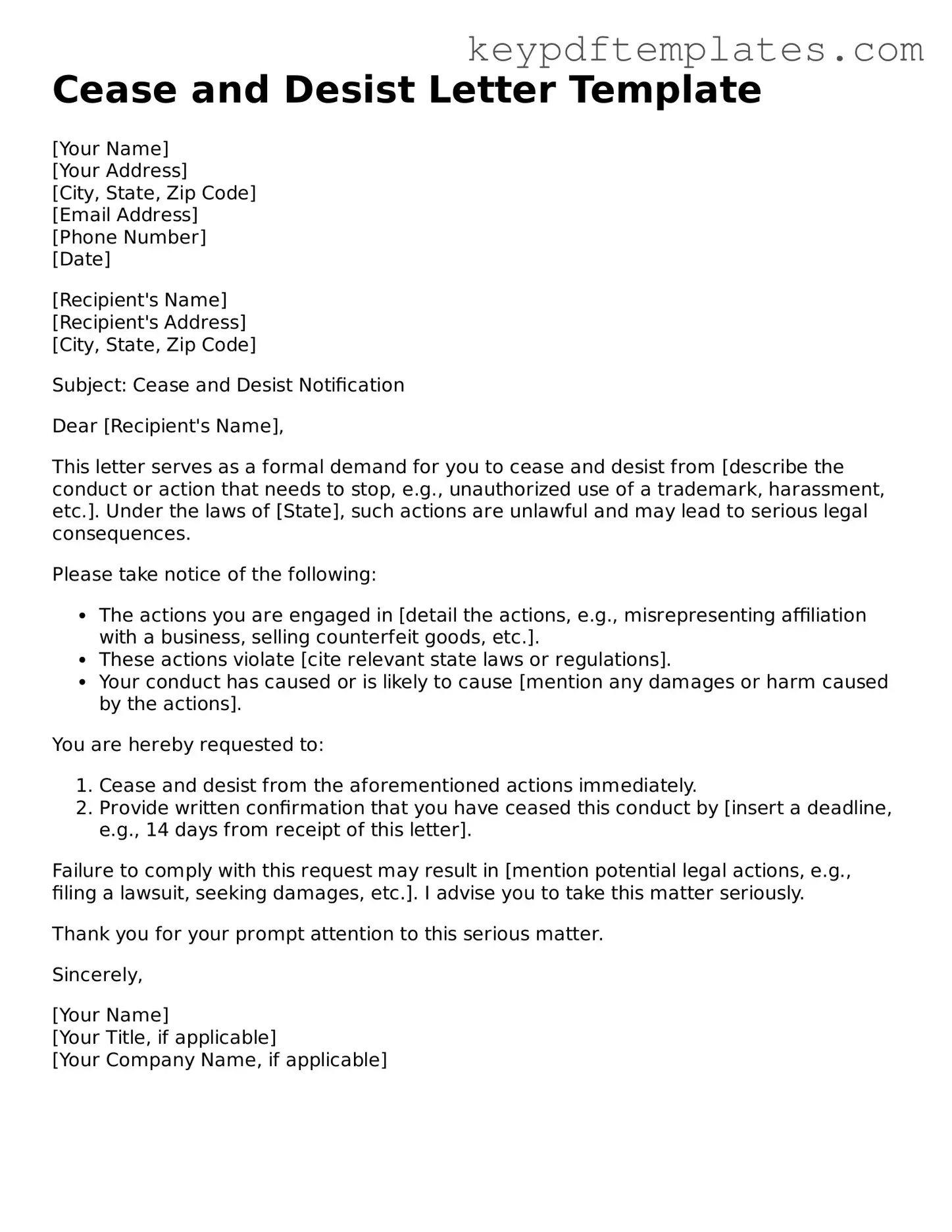Printable Cease and Desist Letter Template
A Cease and Desist Letter is a formal document sent to an individual or organization to demand that they stop a specific action or behavior. This letter serves as a warning, outlining the legal rights of the sender and the consequences of non-compliance. Understanding how to properly use this form can be crucial in resolving disputes before they escalate into more serious legal issues.
Modify Document Online
